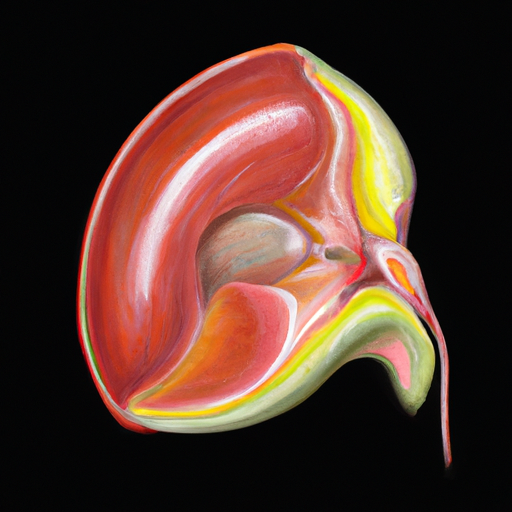Hydrocele, a condition that affects many individuals, is a topic that demands attention and understanding. In this article, we will delve into the various aspects of hydrocele, including its symptoms, causes, and diagnostic methods. We will also explore the different treatment options available to effectively manage this condition. Additionally, we will provide expert insights on prevention tips and lifestyle changes that can help individuals better manage hydrocele. Whether you or someone you know is dealing with hydrocele, this article aims to equip you with the necessary information to navigate this condition with confidence.
1. Understanding Hydrocele: Symptoms, Causes, and Diagnosis
Hydrocele is a common medical condition characterized by the accumulation of fluid in the scrotum, leading to swelling and discomfort. It primarily affects males, particularly newborns and older men. Understanding the symptoms, causes, and diagnosis of hydrocele is crucial for effective management and treatment.
Symptoms of hydrocele usually include painless swelling in the scrotum, which may vary in size. This swelling may be more noticeable after physical activities or prolonged standing. In some cases, hydrocele can cause a feeling of heaviness or discomfort. However, it is essential to note that hydrocele does not typically cause severe pain.
The causes of hydrocele can be broadly classified into two types: communicating and non-communicating hydroceles. Communicating hydroceles occur when there is an abnormal connection between the scrotal sac and the abdominal cavity, which allows fluid to flow in and accumulate. Non-communicating hydroceles, on the other hand, occur due to an imbalance in the fluid production and absorption within the scrotum.
In newborns, hydrocele often occurs due to the incomplete closure of the sac that surrounds the testicles during development. This closure typically occurs before birth but can sometimes be delayed. In older men, hydrocele may result from various causes, including inflammation or injury to the scrotum, infection, or underlying medical conditions such as testicular tumors
2. Exploring Effective Treatment Options for Hydrocele
Hydrocele is a condition characterized by the accumulation of fluid around the testicles, leading to swelling and discomfort. While hydroceles are usually harmless and do not require immediate medical attention, they can cause discomfort and affect the quality of life for some individuals. Fortunately, there are several effective treatment options available for hydrocele, ranging from conservative approaches to surgical interventions.
1. Watchful Waiting:
In many cases, hydroceles resolve on their own without any treatment. Therefore, doctors often adopt a watchful waiting approach, especially if the hydrocele is small and not causing any pain or discomfort. Regular check-ups are necessary to monitor the size and progression of the hydrocele. If it remains stable or reduces in size over time, no further treatment may be required.
2. Lifestyle Modifications:
For individuals experiencing mild symptoms, certain lifestyle modifications can help alleviate discomfort and manage hydrocele. Wearing supportive underwear or a scrotal support can provide relief by reducing pressure on the testicles and minimizing swelling. Avoiding activities that aggravate the condition, such as heavy lifting or strenuous exercise, can also be beneficial.
3. Medications:
While medications cannot cure hydrocele, they may help manage associated symptoms such as pain or inflammation. Over-the-counter pain relievers like acetaminophen or nonsteroidal anti-inflammatory drugs (NSAIDs) can be used to alleviate discomfort. However
3. Expert Insights: Prevention Tips and Lifestyle Changes to Manage Hydrocele
Expert Insights: Prevention Tips and Lifestyle Changes to Manage Hydrocele
While hydrocele is a condition that cannot always be prevented, there are certain measures individuals can take to reduce the risk of developing this condition or manage it effectively if diagnosed. Here are some expert insights on prevention tips and lifestyle changes that can help in managing hydrocele:
1. Practice good hygiene: Maintaining good hygiene is crucial in preventing any infection or inflammation that may lead to hydrocele. It is important to keep the genital area clean and dry to minimize the risk of developing any complications.
2. Wear supportive underwear: Wearing underwear that provides adequate support to the scrotum can help reduce the risk of hydrocele. Opt for underwear that is comfortable and provides enough space for proper ventilation to prevent excessive sweating in the groin area.
3. Avoid injury to the scrotum: Accidental trauma to the scrotum can sometimes lead to hydrocele. To prevent this, it is advisable to take precautions when engaging in activities that pose a risk of injury to the genital area, such as contact sports. Wearing protective gear, such as a cup, can provide an additional layer of protection.
4. Maintain a healthy weight: Obesity has been linked to an increased risk of hydrocele. Adopting a healthy lifestyle that includes regular exercise and a balanced diet can help manage weight and reduce the risk of developing hydrocele.
5

